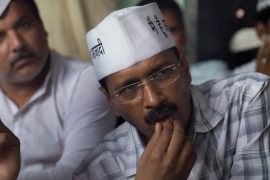What would happen if a category four or five cyclone were to hit Mumbai? Can we imagine the catastrophic death and destruction? If the Bhabha Atomic Research Centre at Trombay was deluged in water, how would India cope with the nuclear aftermath? Will future generations look back and think us colossally deranged for failing to tackle the greatest challenge of our times?
These are some of the powerful questions Ghosh narrates on Asia and particularly India, bringing together climate data from past and present to tell a chilling tale of what could happen in the future.
For example, we learn that 2015 was the first year in which the Arabian Sea generated more storms than the Bay of Bengal, pointing to a future where powerful cyclones not seen for centuries strike the coastal cities. In Mumbai, the human toll of such a storm, on 20 million inhabitants, as well as the damage to infrastructure, power and transport systems it would cause, could be catastrophic.
Or take the Bhabha Atomic Research Centre, situated by the sea. A storm surge could cut power to the complex, where:essential cooling systems could fail; safety systems could be damaged; contaminants could seep into the plant and radioactive water could leak out, as happened at the Fukushima Daiichi plant.”
Copyright©Madras Courier, All Rights Reserved. You may share using our article tools. Please don't cut articles from madrascourier.com and redistribute by email, post to the web, mobile phone or social media.Please send in your feed back and comments to [email protected]











